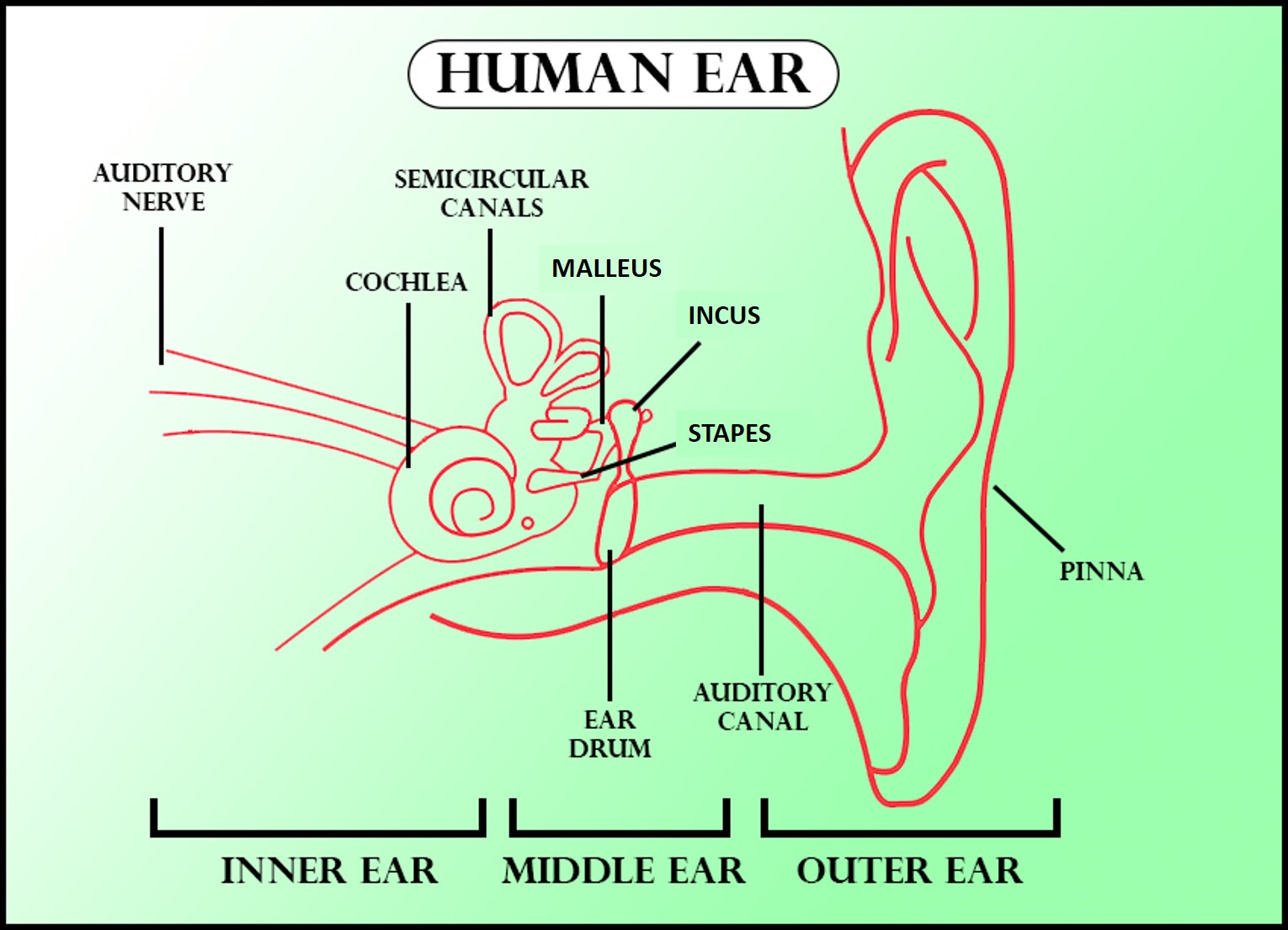
Name the smallest bone in the human body.
Answer
571.8k+ views
Hint: The smallest bone in the human body is located in an external organ that maintains the equilibrium of our body. Also, this smallest bone is connected to two other small bones in the form of a flexible chain.
Complete answer:
Stapes is the smallest bone in the human body and located in the middle ear as a part of the ear ossicles. A pair of ears are located on either side of the head for hearing and equilibrium. Ear ossicles are tiny bones that amplify the incoming sound waves up to twenty times without changing its frequency. Malleus is the largest ear ossicle and the stapes is the smallest ear ossicle.
Each ear consists of three portions- external ear, middle ear, and inner ear.
- The external ear comprises a pinna and external auditory meatus or canal. Pinna is sensitive as well as effective in receiving the incoming sound waves.
- The sound waves travel through a tubular passage ‘external auditory meatus’ which is lined by hair and ceruminous(wax glands) and enters the middle ear.
- The eardrum or tympanic membrane vibrates. It separates the tympanic cavity from the external auditory meatus.
- The three ear ossicles transmit the vibrations across the middle ear to the oval window
- The Oval window transfers the waves to the fluid of cochlea producing waves in the lymph.
- The generation of a ripple in the basilar membrane by the waves will stimulate the sensory hairs in the Organ of Corti.
- As a result, the stimulus of nerve impulses reaches the auditory cortex of the brain via auditory nerves.

Note:
- The tympanic cavity is filled with air and is connected to the nasopharynx via the Eustachian tube which serves to equalize the air pressure inside the air with that on the outside.
- The cochlea is the main hearing organ which is spirally coiled and contains fluid (lymph) filled chambers.
- In its lower or basilar membrane, the organ of Corti is located from which the sensory hair projects.
Complete answer:
Stapes is the smallest bone in the human body and located in the middle ear as a part of the ear ossicles. A pair of ears are located on either side of the head for hearing and equilibrium. Ear ossicles are tiny bones that amplify the incoming sound waves up to twenty times without changing its frequency. Malleus is the largest ear ossicle and the stapes is the smallest ear ossicle.
Each ear consists of three portions- external ear, middle ear, and inner ear.
- The external ear comprises a pinna and external auditory meatus or canal. Pinna is sensitive as well as effective in receiving the incoming sound waves.
- The sound waves travel through a tubular passage ‘external auditory meatus’ which is lined by hair and ceruminous(wax glands) and enters the middle ear.
- The eardrum or tympanic membrane vibrates. It separates the tympanic cavity from the external auditory meatus.
- The three ear ossicles transmit the vibrations across the middle ear to the oval window
- The Oval window transfers the waves to the fluid of cochlea producing waves in the lymph.
- The generation of a ripple in the basilar membrane by the waves will stimulate the sensory hairs in the Organ of Corti.
- As a result, the stimulus of nerve impulses reaches the auditory cortex of the brain via auditory nerves.

Note:
- The tympanic cavity is filled with air and is connected to the nasopharynx via the Eustachian tube which serves to equalize the air pressure inside the air with that on the outside.
- The cochlea is the main hearing organ which is spirally coiled and contains fluid (lymph) filled chambers.
- In its lower or basilar membrane, the organ of Corti is located from which the sensory hair projects.
Recently Updated Pages
Master Class 11 Social Science: Engaging Questions & Answers for Success

Master Class 11 Physics: Engaging Questions & Answers for Success

Master Class 11 Maths: Engaging Questions & Answers for Success

Master Class 11 Economics: Engaging Questions & Answers for Success

Master Class 11 Computer Science: Engaging Questions & Answers for Success

Master Class 11 Chemistry: Engaging Questions & Answers for Success

Trending doubts
What is meant by exothermic and endothermic reactions class 11 chemistry CBSE

10 examples of friction in our daily life

Difference Between Prokaryotic Cells and Eukaryotic Cells

1 Quintal is equal to a 110 kg b 10 kg c 100kg d 1000 class 11 physics CBSE

One Metric ton is equal to kg A 10000 B 1000 C 100 class 11 physics CBSE

Draw a diagram of nephron and explain its structur class 11 biology CBSE




